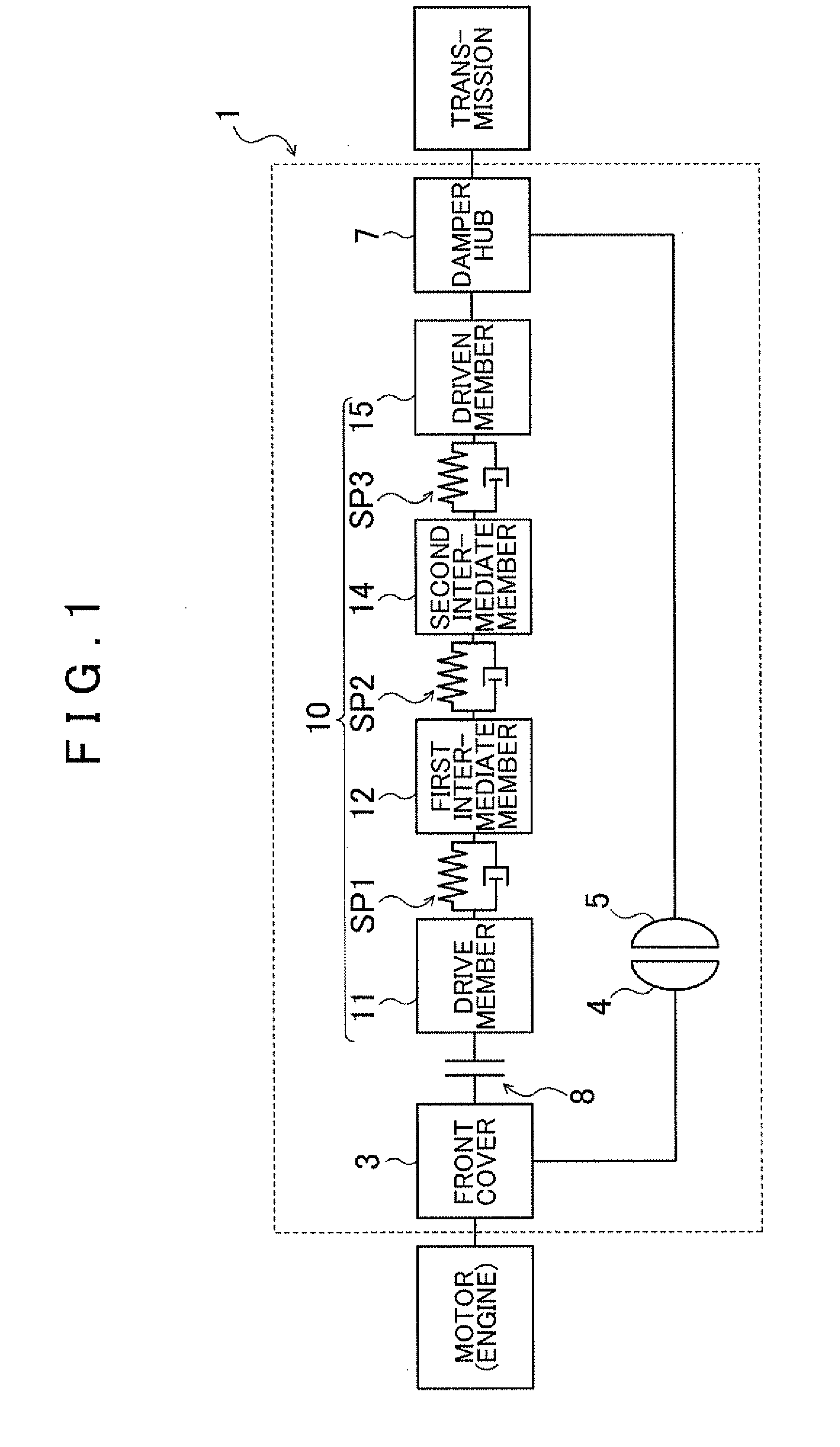Damper device
a technology of adamant device and a ring, which is applied in the direction of fluid gearing, coupling, gearing, etc., to achieve the effect of reducing the transmission of vibration and relatively low torque of the motor
- Summary
- Abstract
- Description
- Claims
- Application Information
AI Technical Summary
Benefits of technology
Problems solved by technology
Method used
Image
Examples
Embodiment Construction
[0016]A mode for carrying out the present invention will now be described using an embodiment.
[0017]FIG. 1 is a schematic configuration diagram that shows a fluid transmission apparatus 1 that includes a damper device 10 according to an embodiment of the present invention. FIG. 2 is a partially cross-sectional view that shows the fluid transmission apparatus 1. The fluid transmission apparatus 1 shown in these drawings is a torque converter that is mounted as a starting apparatus on a vehicle equipped with an engine (internal combustion engine) that serves as a motor. The fluid transmission apparatus 1 includes: a front cover (input member) 3 that is coupled to a crankshaft of the engine (not shown); a pump impeller (input-side fluid transmitting element) 4 that is fixed to the front cover 3; a turbine runner (output-side fluid transmitting element) 5 that is rotatable coaxially with the pump impeller 4; a stator 6 that rectifies the flow of hydraulic oil (hydraulic fluid) from the ...
PUM
 Login to View More
Login to View More Abstract
Description
Claims
Application Information
 Login to View More
Login to View More - R&D
- Intellectual Property
- Life Sciences
- Materials
- Tech Scout
- Unparalleled Data Quality
- Higher Quality Content
- 60% Fewer Hallucinations
Browse by: Latest US Patents, China's latest patents, Technical Efficacy Thesaurus, Application Domain, Technology Topic, Popular Technical Reports.
© 2025 PatSnap. All rights reserved.Legal|Privacy policy|Modern Slavery Act Transparency Statement|Sitemap|About US| Contact US: help@patsnap.com



